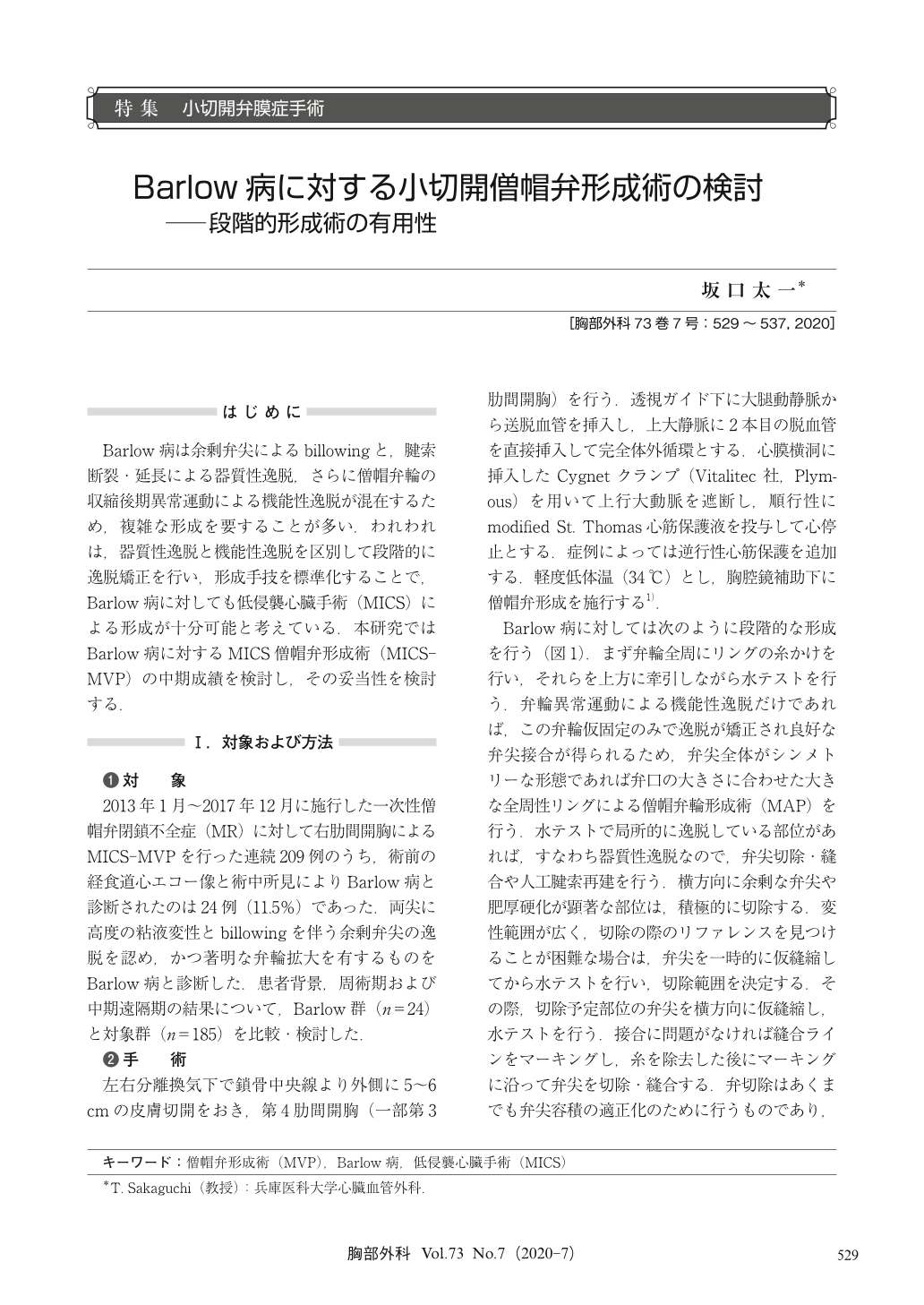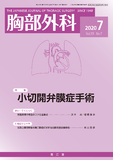Japanese
English
- 有料閲覧
- Abstract 文献概要
- 1ページ目 Look Inside
- 参考文献 Reference
Barlow病は余剰弁尖によるbillowingと,腱索断裂・延長による器質性逸脱,さらに僧帽弁輪の収縮後期異常運動による機能性逸脱が混在するため,複雑な形成を要することが多い.われわれは,器質性逸脱と機能性逸脱を区別して段階的に逸脱矯正を行い,形成手技を標準化することで,Barlow病に対しても低侵襲心臓手術(MICS)による形成が十分可能と考えている.本研究ではBarlow病に対するMICS僧帽弁形成術(MICS-MVP)の中期成績を検討し,その妥当性を検討する.
Backgrounds:Mitral regurgitation (MR) in Barlow’s disease is complicated because of its mixed pathophysiology, leaflet billowing with/without organic prolapse, and abnormal annular dynamics that causes functional prolapse. Complex repair techniques, including aggressive leaflet resection and implantation of multiple neochords, are conventionally performed;nevertheless, these are technically demanding, especially when performed using a minimally invasive approach. We aimed to standardize the repair technique for Barlow’s disease and developed stepwise repair techniques.
Methods:Of 209 patients who underwent isolated minimally invasive mitral valve repair for primary MR, 24 patients were found to have Barlow’s disease. Their early and mid-term clinical outcomes were compared with those of the rest of patients (control group, n=185). Our repair technique for Barlow’s disease consists of the following 3 steps:1) stabilization of the mitral annulus by placing annuloplasty ring sutures;2) distinction between organic and functional prolapse by a saline injection test;and 3) targeted repair for organic prolapse by leaflet resection or chordal replacement.
Results:Patients in the Barlow group were significantly younger than the control group (49±10 years versus 57±13 years, respectively). In terms of repair technique, leaflet resection or plication was performed in 70.8% and 74.6% of each group, while neochordal replacement was performed in 45.8% and 32.4%, respectively. One patient in the Barlow group underwent ring annuloplasty only. The annuloplasty ring size was larger in the Barlow group than the control group (34±2 mm versus 30±2 mm, respectively). Although the total procedure, cardiopulmonary bypass and cross-clamp times were significantly longer in the Barlow group than the control group, mechanical ventilation time, and duration of intensive care unit stay were similar between groups. The incidence rates of major postoperative complications were low in both groups. The freedom rates from moderate or greater MR at 3 years were 100% in the Barlow group and 87.7% in the control group.
Conclusions:A stepwise repair strategy facilitates mitral valve repair in patients with Barlow’s disease and provides excellent outcomes even via a minimally invasive approach.

© Nankodo Co., Ltd., 2020


